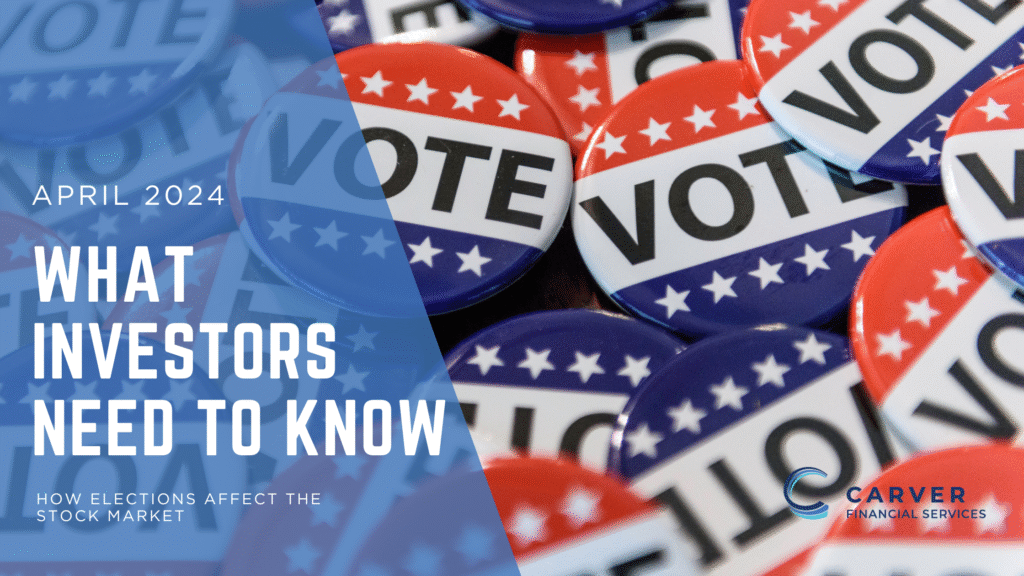
How Elections Affect the Stock Market: What Investors Need to Know
2024: The Year of Global Elections
In 2024, more than 2 billion voters across 50 countries — including the United States, the European Union, and India — will head to the polls.
It’s the largest election year in history, representing over 40% of the world’s population and economy.
These political milestones can trigger short-term swings in global stock markets as investors react to uncertainty and shifting policies. But the key takeaway?
With a well-diversified financial plan, elections should not derail your long-term strategy.
Market Timing vs. Staying the Course
As elections approach, it’s common for investors to ask:
“Should I pull my money out of the market until things settle down?”
The short answer: No — not if you have a diversified portfolio and a long-term plan.
Trying to predict when to exit and re-enter the market — known as market timing — is one of the most common investing mistakes.
Decades of data show that even missing just a handful of the market’s best days can dramatically reduce returns.
For example:
A $10,000 investment in the S&P 500 from January 1, 1999, to December 31, 2018, would have grown to about $48,000 if you stayed invested the entire time.
But if you missed just the 10 best days in those 20 years, your ending balance would have been cut in half.
The lesson is clear — time in the market beats timing the market.
How Elections Influence Markets
Elections don’t just shape governments; they influence how investors perceive risk, policy, and growth potential. But the effects are rarely straightforward.
1. Pre-Election Uncertainty
The months before an election often bring lower returns and higher volatility, as investors brace for potential changes.
According to Forbes, pre-election years tend to underperform because markets dislike uncertainty.
However, in the 12 months following an election, markets typically rebound — regardless of which party wins.
2. Election Day Volatility
Markets often experience short, sharp movements on Election Day as results come in.
Between 1970 and 2022, the S&P 500 moved an average of 0.32% on Election Day — 10 times its normal daily fluctuation of 0.03%, according to Dow Jones Market Data.
Interestingly, 60% of those election days ended positive.
This shows that volatility is normal — not necessarily negative.
3. Post-Election Recovery or Rally
Once results are known, uncertainty fades. Markets tend to stabilize or even rise as investors gain clarity about the new administration’s direction.
Historically, if a new party takes office, average market returns hover around 5% the following year.
If the incumbent party remains, returns average slightly higher at 6.5%.
In other words: Markets can handle bad news — but they dislike not knowing.
The Bigger Picture: Inflation and the Economy Matter More
While elections can move markets in the short term, economic and inflation trends tend to have a far stronger impact on long-term returns.
Data show that GDP growth, interest rates, and inflation influence portfolios far more consistently than political outcomes.
Every election year feels “different,” but history tells us the fundamentals of investing — diversification, patience, and discipline — matter far more than politics.
Smart Strategies for Election-Year Investing
If market chatter or news headlines make you uneasy, here are four ways to stay grounded:
1. Keep Cash for Short-Term Needs
Hold enough liquid assets to cover short-term expenses and emergencies. This ensures you’re never forced to sell investments during a downturn.
2. Stay Diversified
Diversify across asset classes (stocks, bonds, international markets, and alternatives) to help balance potential volatility.
3. Focus on the Long Term
Reacting to short-term political noise often leads to emotional decision-making. Remember: investing is about years, not election cycles.
4. Lean on Professional Guidance
Working with a trusted financial advisor provides both expertise and perspective.
A Vanguard “Advisor’s Alpha” study found that financial advisors add an average of 3% in net returns per year by helping clients stay disciplined, manage taxes, and choose cost-efficient investments.
Your plan — not the political landscape — should drive your financial decisions.
Carver’s Perspective: Experience Through Every Election
At Carver Financial Services, we’ve guided clients through more than three decades of elections, recessions, and recoveries.
Our team — with over 250 years of combined experience — has seen firsthand that elections don’t define outcomes; discipline does.
Our proprietary Personal Vision Planning® process focuses on your life, not just your portfolio.
By aligning your investments with your goals and maintaining a clear long-term strategy, we help you stay confident no matter who wins the next election.
Markets can process bad news — but they can’t process uncertainty.
When you stay invested and stay diversified, you win either way.
Any opinions are those of Randy Carver and not necessarily those of Raymond James. This material is being provided for information purposes only and is not a complete description, nor is it a recommendation. The information has been obtained from sources considered to be reliable, but we do not guarantee that the foregoing material is accurate or complete.

 March 2024
March 2024












